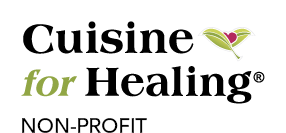
Organic foods must meet certain standards set by the USDA before they can be labeled as such. Fruits and vegetables must be grown using natural methods like crop rotation and the soil and crop must be free from synthetic pest and weed control. Animals are not given growth hormones or antibiotics, and they are required to have more space and better overall raising practices.
Organically farmed animals produce meat and milk that is richer in nutrients as well as omega-3 fatty acids. Organic produce on average also has higher levels of important nutrients like Vitamin C and substantially more antioxidants. Without pesticides, plants produce more phenols and polyphenols to defend themselves against pests. Phenols and polyphenols assist humans in preventing oxidative damage which lowers the risk of coronary heart disease, strokes and certain cancers. Organic fruits and vegetables are thought to contain as much as 20 to 40% more antioxidants as compared to their conventional counterpart.
Perhaps the most important part about eating organic foods is not what they add to your diet but what they lack. Glyphosate is the main ingredient in commercial pesticides, it has been shown to cause cancer in individuals with high exposure. A study conducted by Friends of the Earth demonstrated a 70% drop in glyphosate levels in the body when participants went on an organic diet after only one week. Conventional foods have been shown to have substantially higher levels of cadmium, a toxic heavy metal contaminant, as compared to organic foods. The populations most vulnerable to pesticide exposure are children, the elderly, and those with compromised immune systems.
The clean 15 and the dirty dozen list published by the Environmental Working Group narrows down the conventional fruits and vegetables with the highest pesticides compared to those with the lowest. If eating organic foods 100% of the time doesn’t fit into your budget, check out the list below. Foods in the dirty dozen have the highest levels of pesticides and foods in the clean 15 have the lowest levels.
2022 Dirty Dozen: Strawberries, Spinach, Kale, Collards & Mustard Greens, Nectarines, Apples, Grapes, Bell and Hot Peppers, Cherries, Peaches, Pears, Celery, and Tomatoes
2022 Clean 15: Avocados, Sweet Corn, Pineapples, Onions, Papaya, Sweet Peas (Frozen), Asparagus, Honeydew Melon, Kiwi, Cabbage, Mushrooms, Cantaloupe, Mangoes, Watermelon, Sweet Potatoes
It can be difficult to find organic food on the go if you have a busy schedule; luckily Cuisine for Healing has all of your favorite healthy organic dishes readily available for those days when you just don’t have the energy or the time to cook.
https://www.colorado.edu/ecenter/2021/03/17/positive-impact-organic-foods










